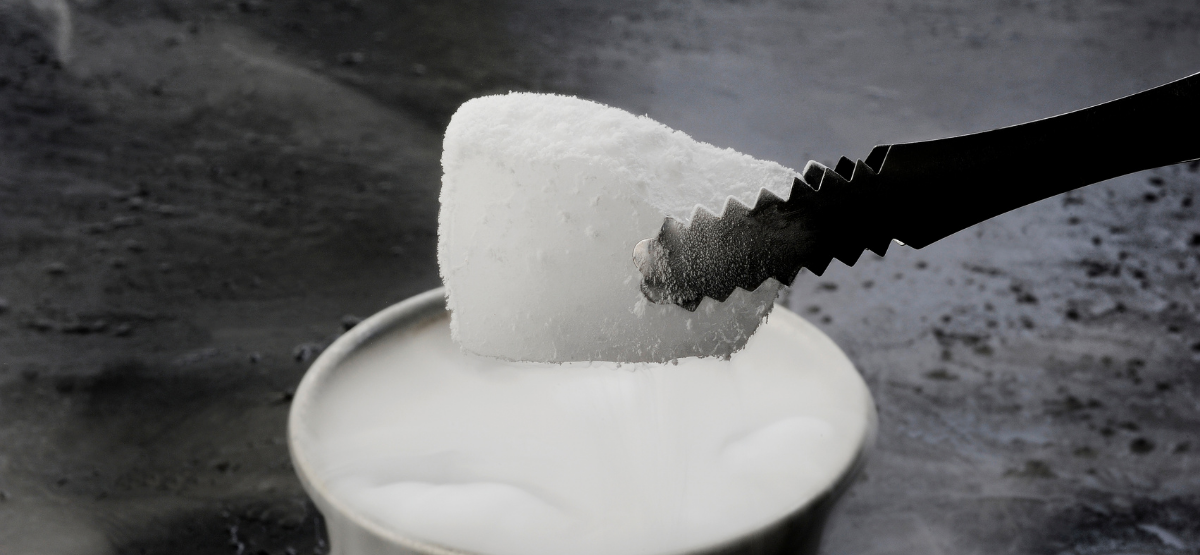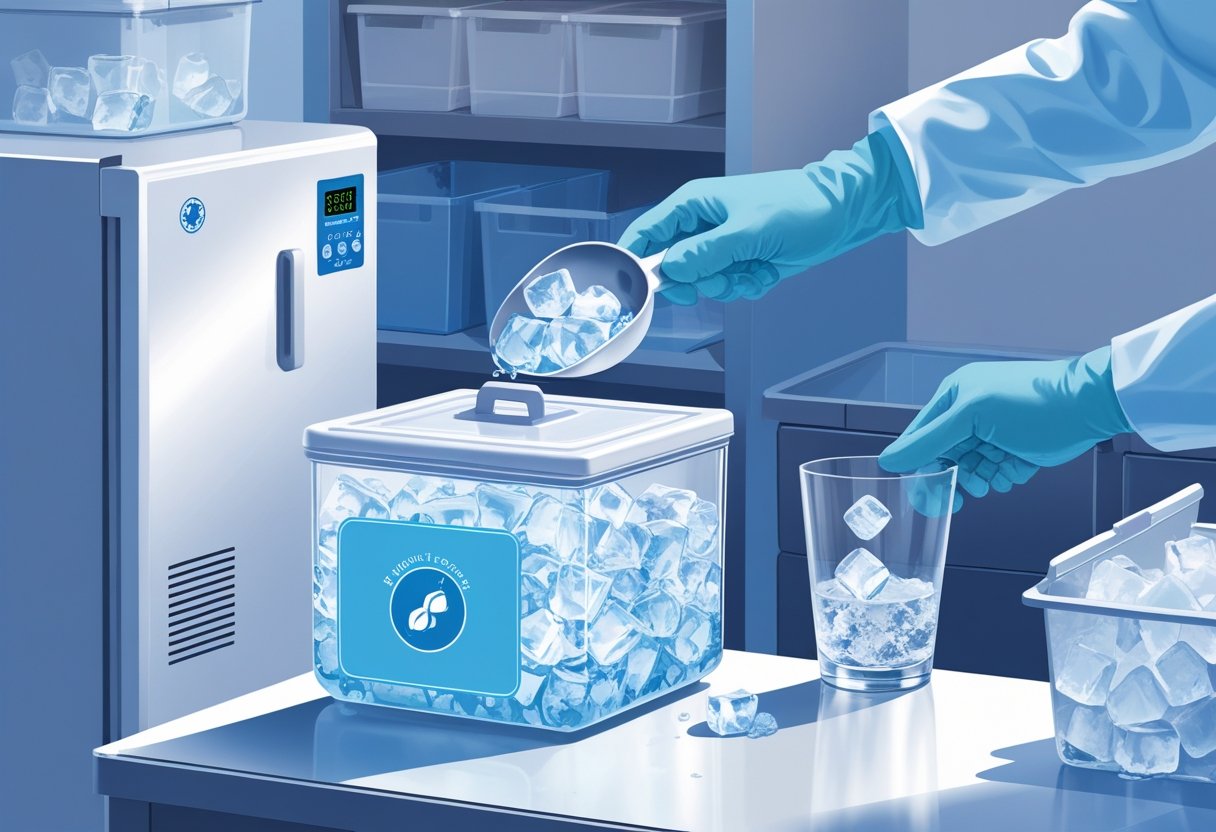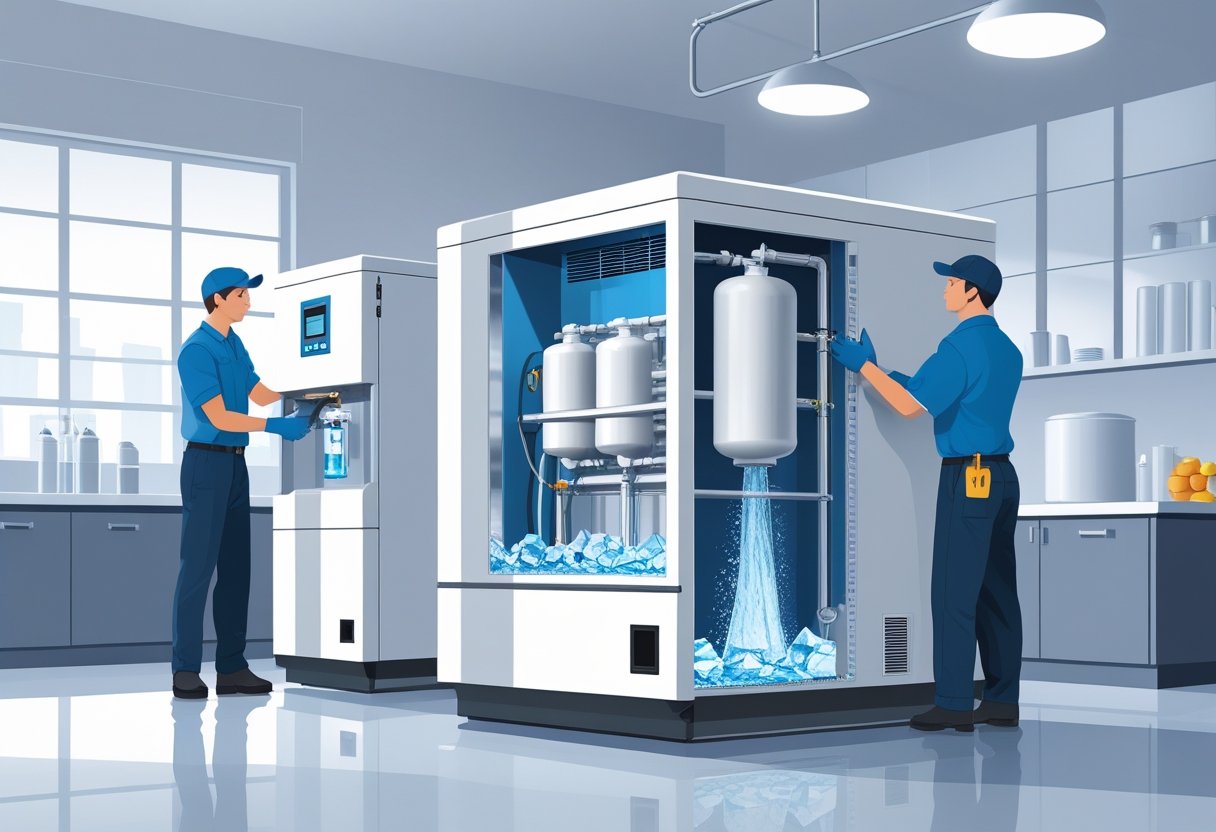proudly serving
the mid-south

The Science Behind What Happens When You Place Dry Ice in Water – Memphis Ice
Discover some of the ways ice can become unhealthy, common yet avoidable problems, and how you can be sure your ice maker is safe and healthy for your home or business.
You’ve seen the videos. People toss dry ice of all sizes into cups, smashing it onto the ground, or even filling entire residential pools with massive blocks of dry ice. Dry ice is incredibly compelling to watch. It’s why so many content creators rake up millions of views every year taking advantage of dry ice’s unique properties. But does that mean it’s safe for common use? Sure, you can buy dry ice. But do you have the technology in place to store it? Do you have the right protective equipment? Do you understand what dry ice is and the science behind it?
We’re going to dive into dry ice. What is it, Why it becomes fog, and Why it’s probably not a good idea to start using it for daily application in your home.
What is Dry Ice?
Dry ice is frozen CO2. Businesses began using dry ice for commercial applications in the 1920s.
Unlike frozen water, H2O, CO2 converts from a solid directly to a gas under normal atmospheric pressure. That process is called sublimation. This means that proper use and application of dry ice requires some extremely cold temperatures. In order for CO2 to remain solid, you need to maintain a temperature of -109 degrees Fahrenheit or lower.
What happens when you put dry ice in water?
As we mentioned, sublimation is when solid converts directly to a gas, bypassing the liquid phase. Maybe that sounds familiar from middle school science, but that doesn’t mean it’s anything less than fascinating. One thing to note here is water does not play an active role in the sublimation of dry ice. It only acts as a conductor, transferring heat from itself to the sublime dry ice.
Thankfully, H2O, or water, stays liquid under the normal atmospheric pressure here on Earth. However, H2O can sublimate just the same as CO2. Maybe on some distant planet, there’s this group of fashionable aliens that drink CO2 as we do water and use H2O as dry ice. But hey, that’s getting into science fiction. Another blog, another time.
What about that fog?
We haven’t talked about the witches’ brew yet. You know what we’re talking about. It’s that spooky fog effect that makes people so curious about dry ice in the first place. The science behind it, however, isn’t as exciting as the fog looks. Clouds, here on Earth, are made up of water droplets or crystals condensing in low temperatures. Usually, that occurs in our upper atmosphere. Sometimes, it happens near the ground, producing fog. Fun fact: there are planets here in our solar system with CO2 clouds!
The clouds that form when dry ice is placed in water are due to the transfer of heat between water and the dry ice. As CO2 sublimes, it’s still pretty cold. The water in our air condenses around the cold CO2 just the same as it does in our upper atmosphere, creating the fog effect we know and love.
Is it safe to consume food frozen or prepared with dry ice?
Have you ever tried eating food at or below freezing? Did it hurt you? Could you chew it? The answer is, unless you really went at it, probably not. You’d realize pretty quick it’s too cold to eat and wait for it to reach a suitable temperature.
The same can be said for food frozen or cooled with dry ice. Since it can reach colder temperatures than water ice, it’s best not to handle this food without protection or until it reaches near or above freezing.
Again, this is only applicable to food or drink, not dry ice. It is never safe to consume dry ice itself. It will hurt you and possibly cause life-altering problems to your digestive system. Leave dry ice preparation to the professionals, okay?
We prefer H2O here at Memphis Ice
Recent News

Why Is My Ice Machine Slow Causes and Quick Fixes to Improve Ice Production

Best Practices for Storing Ice to Maintain Purity and Extend Shelf Life

Top Reasons Ice Machines Fail and How to Prevent Costly Breakdowns

Common Ice Machine Rental Questions Answered for Event and Business Needs

How to Choose a Commercial Ice Machine for Optimal Efficiency and Reliability

Importance of Routine Ice Machine Cleaning for Health and Efficiency Maintenance



